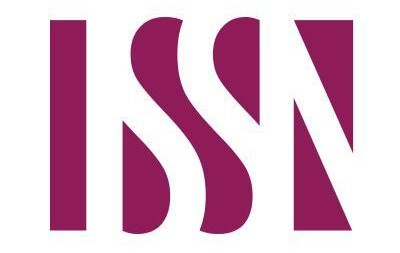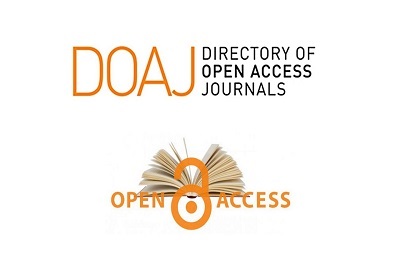The Impact of Deceleration Training on Dynamic Balance Skills of Young Soccer Players
Main Article Content
Abstract
The research aims to: evaluate the effect of the deceleration training method in improving the dynamic balance skills of young football players compared to traditional training methods. The research sample included 26 football players. The experimental method was used due to its suitability to the nature of the research. The differences between the means were analyzed using Wilcoxon, and the comparison between the two groups was analyzed using post-hoc Mann-Whitney-U analyses. The researcher concluded that the deceleration training program contributes to developing the dynamic balance performance of young soccer players more than the traditional training program and recommended: including the deceleration zone in speed training for young soccer players. The effect of speed training, including the deceleration zone, on various motor skills can be studied.
Article Details

This work is licensed under a Creative Commons Attribution-NonCommercial 4.0 International License.
References
BadrKhalaf, H. , Aldewan, L. H., & Abdul-Hussein, Th. S. (2021). The effect of McCarthy ’s model on developing the football scoring skill for students. Journal of Studies and Researches of Sport Education, 67, 170–182. https://www.iasj.net/iasj/article/213521
Bloomfield, J., Polman, R., O’donoghue, P., & McNaughton, L. (2007). Effective speed and agility conditioning methodology for random intermittent dynamic type sports. The Journal of Strength & Conditioning Research, 21(4), 1093–1100.
Bruhn, S., Kullmann, N., & Gollhofer, A. (2006). Combinatory effects of high-intensity-strength training and sensorimotor training on muscle strength. International Journal of Sports Medicine, 27(05), 401–406.
Camliguney, A. F. (2013). The effects of short-term ski trainings on dynamic balance performance and vertical jump in adolescents. Educational Research and Reviews, 8(10), 568.
Gonell, A. C., Romero, J. A. P., & Soler, L. M. (2015). Relationship between the Y balance test scores and soft tissue injury incidence in a soccer team. International Journal of Sports Physical Therapy, 10(7), 955.
Gorostiaga, E. M., Izquierdo, M., Ruesta, M., Iribarren, J., Gonzalez-Badillo, J. J., & Ibanez, J. (2004). Strength training effects on physical performance and serum hormones in young soccer players. European Journal of Applied Physiology, 91, 698–707.
Helgerud, J., Engen, L. C., Wisløff, U., & Hoff, J. A. N. (2001). Aerobic endurance training improves soccer performance. Medicine & Science in Sports & Exercise, 33(11), 1925–1931.
Hewit, J., Cronin, J., Button, C., & Hume, P. (2011). Understanding deceleration in sport. Strength & Conditioning Journal, 33(1), 47–52.
Izzo, R., & Lo Castro, L. (2015). The study of acceleration and deceleration capacity decrease in repeated sprints in soccer. International Journal of Physical Education, Sport and Health, 2(2), 1685–2394.
Jeffreys, I. (2013). Developing speed. Human Kinetics.
Khazal, H. N., Rasoul, T. H. A., & Mohammed, L. H. (2024). The effect of the self-scheduling strategy (KWL) in developing tactical knowledge and some football skill abilities for students. Journal of Studies and Researches of Sport Education, 34(1).
Kovacs, M. S. (2006). Applied physiology of tennis performance. British Journal of Sports Medicine, 40(5), 381–386.
Kovacs, M. S., Roetert, E. P., & Ellenbecker, T. S. (2008). Efficient deceleration: The forgotten factor in tennis-specific training. Strength & Conditioning Journal, 30(6), 58–69.
Kovacs, M. S., Roetert, E. P., & Ellenbecker, T. S. (2015). Efficient deceleration: The forgotten factor in tennis-specific training. Strength & Conditioning Journal, 37(2), 92–103.
Krustrup, P., Mohr, M., Ellingsgaard, H., & Bangsbo, J. (2005). Physical demands during an elite female soccer game: importance of training status. Medicine & Science in Sports & Exercise, 37(7), 1242–1248.
Lakomy, J., & Haydon, D. T. (2004). The effects of enforced, rapid deceleration on performance in a multiple sprint test. The Journal of Strength & Conditioning Research, 18(3), 579–583.
Lees, A. (2002). Technique analysis in sports: a critical review. Journal of Sports Sciences, 20(10), 813–828.
Lockie, R. G., Schultz, A. B., Callaghan, S. J., & Jeffriess, M. D. (2014). The effects of traditional and enforced stopping speed and agility training on multidirectional speed and athletic function. The Journal of Strength & Conditioning Research, 28(6), 1538–1551.
Lockie, R. G., Schultz, A. B., Jeffriess, M. D., & Callaghan, S. J. (2012). The relationship between bilateral differences of knee flexor and extensor isokinetic strength and multi-directional speed. Isokinetics and Exercise Science, 20(3), 211–219.
Lunsford-Avery, J. R., Kollins, S. H., & Mitchell, J. T. (2021). Sluggish cognitive tempo in adults referred for an ADHD evaluation: A psychometric analysis of self-and collateral report. Journal of Attention Disorders, 25(3), 322–331.
Musharraf, A. J., Harbi, A. R. N., Hammadi, J. N., & Fayhan, A. Q. S. A. (2022). A study comparing some motor abilities between soccer and handball players. Sciences Journal Of Physical Education, 15(3).
Onofrei, R.-R., Amaricai, E., Petroman, R., Surducan, D., & Suciu, O. (2019). Preseason dynamic balance performance in healthy elite male soccer players. American Journal of Men’s Health, 13(1), 1557988319831920.
Pau, M., Arippa, F., Leban, B., Corona, F., Ibba, G., Todde, F., & Scorcu, M. (2015). Relationship between static and dynamic balance abilities in Italian professional and youth league soccer players. Physical Therapy in Sport, 16(3), 236–241.
Plisky, P. J., Gorman, P. P., Butler, R. J., Kiesel, K. B., Underwood, F. B., & Elkins, B. (2009). The reliability of an instrumented device for measuring components of the star excursion balance test. North American Journal of Sports Physical Therapy: NAJSPT, 4(2), 92.
Rasoul, T. H. A. (2024). Evaluating The Effectiveness Of Different Teaching Methods In Improving Skill Performance In Teaching Football. Journal of Studies and Researches of Sport Education, 34(2), 70–80. https://doi.org/10.55998/jsrse.v34i2.505
Teixeira, L. A., de Oliveira, D. L., Romano, R. G., & Correa, S. C. (2011). Leg preference and interlateral asymmetry of balance stability in soccer players. Research Quarterly for Exercise and Sport, 82(1), 21–27.
Tracey, S.-Y., Anderson, D. I., Hamel, K. A., Gorelick, M. L., Wallace, S. A., & Sidaway, B. (2012). Kicking performance in relation to balance ability over the support leg. Human Movement Science, 31(6), 1615–1623.





 IASJ
IASJ CC-BY-4.0
CC-BY-4.0 turnitin
turnitin ISSN
ISSN DOAJ
DOAJ Crossref
Crossref GoogleScholar
GoogleScholar Orcid
Orcid